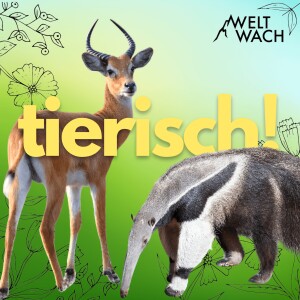
- Podcast Features
-
Monetization
-
Ads Marketplace
Join Ads Marketplace to earn through podcast sponsorships.
-
PodAds
Manage your ads with dynamic ad insertion capability.
-
Apple Podcasts Subscriptions Integration
Monetize with Apple Podcasts Subscriptions via Podbean.
-
Live Streaming
Earn rewards and recurring income from Fan Club membership.
-
Ads Marketplace
- Podbean App
-
Help and Support
-
Help Center
Get the answers and support you need.
-
Podbean Academy
Resources and guides to launch, grow, and monetize podcast.
-
Podbean Blog
Stay updated with the latest podcasting tips and trends.
-
What’s New
Check out our newest and recently released features!
-
Podcasting Smarter
Podcast interviews, best practices, and helpful tips.
-
Help Center
-
Popular Topics
-
How to Start a Podcast
The step-by-step guide to start your own podcast.
-
How to Start a Live Podcast
Create the best live podcast and engage your audience.
-
How to Monetize a Podcast
Tips on making the decision to monetize your podcast.
-
How to Promote Your Podcast
The best ways to get more eyes and ears on your podcast.
-
Podcast Advertising 101
Everything you need to know about podcast advertising.
-
Mobile Podcast Recording Guide
The ultimate guide to recording a podcast on your phone.
-
How to Use Group Recording
Steps to set up and use group recording in the Podbean app.
-
How to Start a Podcast
-
Podcasting
- Podcast Features
-
Monetization
-
Ads Marketplace
Join Ads Marketplace to earn through podcast sponsorships.
-
PodAds
Manage your ads with dynamic ad insertion capability.
-
Apple Podcasts Subscriptions Integration
Monetize with Apple Podcasts Subscriptions via Podbean.
-
Live Streaming
Earn rewards and recurring income from Fan Club membership.
-
Ads Marketplace
- Podbean App
- Advertisers
- Enterprise
- Pricing
-
Resources
-
Help and Support
-
Help Center
Get the answers and support you need.
-
Podbean Academy
Resources and guides to launch, grow, and monetize podcast.
-
Podbean Blog
Stay updated with the latest podcasting tips and trends.
-
What’s New
Check out our newest and recently released features!
-
Podcasting Smarter
Podcast interviews, best practices, and helpful tips.
-
Help Center
-
Popular Topics
-
How to Start a Podcast
The step-by-step guide to start your own podcast.
-
How to Start a Live Podcast
Create the best live podcast and engage your audience.
-
How to Monetize a Podcast
Tips on making the decision to monetize your podcast.
-
How to Promote Your Podcast
The best ways to get more eyes and ears on your podcast.
-
Podcast Advertising 101
Everything you need to know about podcast advertising.
-
Mobile Podcast Recording Guide
The ultimate guide to recording a podcast on your phone.
-
How to Use Group Recording
Steps to set up and use group recording in the Podbean app.
-
How to Start a Podcast
-
Help and Support
- Discover

#20: Auf Wanderschaft – Miles and More für die Küstenseeschwalbe!
In dieser Folge geht’s auf Safari nach Tansania! Dort war Lydia kürzlich mit Erik vom Weltwach Podcast unterwegs und hat unter anderem die Great Migration, also die große Wanderbewegung von Huftieren, in der Serengeti erlebt. Große Vogelschwärme hat man ja vielleicht schon gesehen – aber mehrere Millionen Gnus, Zebras und Antilopen? Noch nie. Es sind so große Mengen an Säugetieren, dass die Savanne am Horizont ganz schwarz aussieht. Unglaublich beeindruckend. Findet auch Frauke, die für einige Zeit in der Serengeti mit Löwenforschern arbeiten durfte!
Aber warum machen Tiere eigentlich solche oft anstrengenden und spektakulären Wanderbewegungen? Was sind da die Vorteile? Warum legt zum Beispiel eine Küstenseeschwalbe über 50.000 Kilometer im Jahr zurück? Und während ihr schon den Taschenrechner an den Start bringt, um auszurechnen wie viele Kilometer das pro Tag sind, schauen wir uns außerdem an, wie solche Wanderungen eigentlich erforscht werden können. Bei Gnus läuft man hinterher. OK. (Was übrigens nicht heißt, dass die Wanderbewegung der Gnus gut erforscht ist.) Aber einer Küstenseeschwalbe kann man ja schlecht hinterherfliegen. Es wird also beringt oder zunehmend besendert. Oder, wie bei Walen oft gemacht: akustisch die Wanderrouten überwacht.
Ob Wale, Vögel oder Huftiere: In Zeiten in denen überall Menschen leben und auch noch der Klimawandel die Welt verändert, haben es wandernde Tiere oft schwer. Wanderungen müssen eingestellt oder Wanderrouten verlegt werden. Was da die Effekte sein können, schauen wir uns in der nächsten Folge an. Dann wandern wir nochmal los!
Weiterführende Links:
- System um weltweite Wanderbewegungen zu analysieren: https://www.researchgate.net/publication/356993320_The_Movebank_system_for_studying_global_animal_movement_and_demography
- Parasiten die Wanderungen induzieren: https://www.researchgate.net/publication/361920707_Should_I_stay_should_I_go_or_something_in_between_The_potential_for_parasite-mediated_and_age-related_differential_migration_strategies
- Die große Wanderung in Tansania: https://www.serengeti.com/great-migration-africa.php
- Die großen und kleinen Wanderungen der Gnus: https://royalsocietypublishing.org/doi/full/10.1098/rstb.2017.0012
Ihr möchtet in unserer Show werben? Kontaktiert uns via www.weltwach.de/kooperationen/
Stay in Touch:
Instagram: https://www.instagram.com/weltwach/
LinkedIn: https://www.linkedin.com/company/weltwach/
Facebook: https://www.facebook.com/Weltwach/
YouTube: https://www.youtube.com/c/WELTWACH
Newsletter: https://weltwach.de/newsletter/
Hosted on Acast. See acast.com/privacy for more information.
More Episodes
 2025-07-01
2025-07-01
 2025-06-17
2025-06-17
 2025-05-27
2025-05-27
 2025-05-06
2025-05-06
 2025-04-01
2025-04-01
 2025-03-19
2025-03-19
 2025-03-12
2025-03-12
 2025-03-04
2025-03-04
Create your
podcast in
minutes
- Full-featured podcast site
- Unlimited storage and bandwidth
- Comprehensive podcast stats
- Distribute to Apple Podcasts, Spotify, and more
- Make money with your podcast
It is Free
- Privacy Policy
- Cookie Policy
- Terms of Use
- Consent Preferences
- Copyright © 2015-2025 Podbean.com



